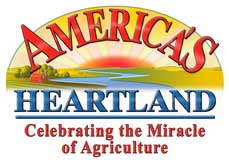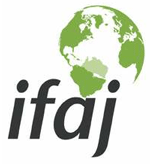 Since I just went on a U.S. Grains Council trip to Morocco, Egypt and Jordan I was interested to see that this week’s episode of America’s Heartland features Ohio farmers Dave and Sue Roehm who saw what we saw and that is the investments in their producer checkoff programs hard at work.
Since I just went on a U.S. Grains Council trip to Morocco, Egypt and Jordan I was interested to see that this week’s episode of America’s Heartland features Ohio farmers Dave and Sue Roehm who saw what we saw and that is the investments in their producer checkoff programs hard at work.
“This trip was a big revelation to me. It was phenomenal the impact export market development programs orchestrated by the Council and U.S. Wheat are having overseas,” said Sue. “When I look at our corn and wheat in Ohio, I will have a whole different perspective. My family’s harvest is truly improving lives thousands of miles away.”
The program was made possible with a sponsorship from the Ohio Corn Marketing Program and assistance from the U.S. Grains Council and U.S. Wheat Associates.
The program airs this week and is available online. You can see if it’s scheduled in your area here. It is also airing on RFD-TV on Wednesday, Jan. 6, and again on Sunday, Jan. 10.

 As reported by Hoosier Ag Today,
As reported by Hoosier Ag Today, 
 In an effort to promote myself as an agriculture speaker available for keynotes and workshops, I have launched a new blog spot I hope you will all check out. It’s called
In an effort to promote myself as an agriculture speaker available for keynotes and workshops, I have launched a new blog spot I hope you will all check out. It’s called  Although I don’t have children of my own yet, I have run across the website
Although I don’t have children of my own yet, I have run across the website  I’m really glad to see the
I’m really glad to see the 
 The
The  Alltech is now marketing its own line of Angus beef. I think my grill needs some of this!
Alltech is now marketing its own line of Angus beef. I think my grill needs some of this!